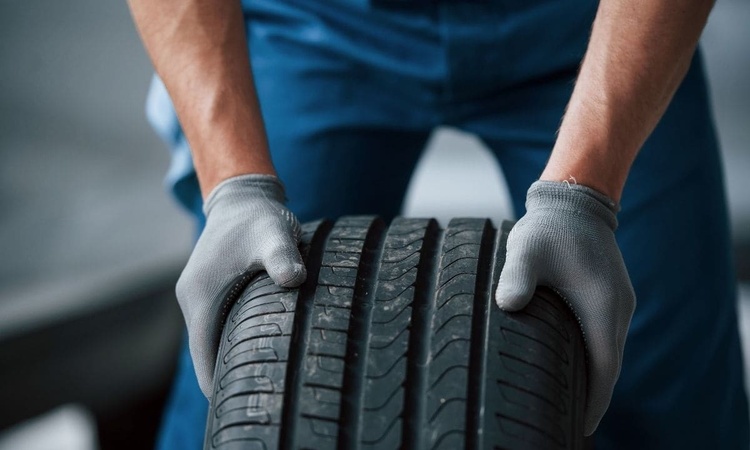Tire Replacement Timing for Brazilian Heavy Vehicle Operations
Heavy vehicle operations in Brazil face unique challenges when it comes to tire maintenance and replacement. From navigating diverse road conditions across the country's vast territory to managing operational costs effectively, fleet managers must understand the critical factors that determine optimal tire replacement timing. Brazilian trucking companies deal with everything from smooth highways to challenging rural roads, extreme weather variations, and strict regulatory requirements that all impact tire performance and longevity.

Choosing the Right Truck Tires for Brazilian Conditions
Selecting appropriate tires for heavy vehicles operating in Brazil requires understanding the country’s diverse geographical and climatic conditions. Brazilian truckers encounter everything from the humid Amazon region to the dry Cerrado savanna, coastal highways to mountainous terrain in the southeast. Each environment places different demands on tire performance, affecting wear patterns and replacement schedules.
The Brazilian market offers various tire categories designed for specific applications. Long-haul tires prioritize fuel efficiency and durability for highway operations, while regional tires balance traction and longevity for mixed road conditions. Off-road tires feature aggressive tread patterns for construction and mining operations common in Brazil’s resource-rich regions.
Load capacity ratings become particularly important given Brazil’s liberal weight regulations for certain cargo types. Choosing tires with appropriate load indices ensures safe operation while maximizing payload capacity, directly impacting operational profitability.
How Truck Tires Wear in Brazilian Operating Conditions
Tire wear patterns in Brazil reflect the country’s unique operational challenges. High temperatures, especially in central and northern regions, accelerate rubber degradation and increase internal tire pressures. This thermal stress can lead to premature shoulder wear and reduced overall tire life.
Road surface conditions significantly impact wear rates. While Brazil has invested heavily in highway infrastructure, many secondary roads still feature rough surfaces that increase abrasive wear. Construction zones and temporary road surfaces create additional challenges for tire longevity.
Brazilian trucking operations often involve long distances between service points, making regular tire inspections crucial. Overloading, while sometimes economically attractive, creates excessive heat buildup and irregular wear patterns that can dramatically shorten tire life.
Seasonal variations also affect wear characteristics. The rainy season brings increased hydroplaning risks and different traction demands, while dry periods can increase road temperatures and dust accumulation that affects tire performance.
Truck Tire Safety Tips for Brazilian Fleet Operations
Implementing comprehensive tire safety protocols protects both drivers and cargo while optimizing replacement timing. Regular pressure checks become even more critical in Brazil’s variable climate conditions, as temperature fluctuations can cause significant pressure variations throughout the day.
Tread depth monitoring should follow both manufacturer recommendations and Brazilian regulatory requirements. The country’s diverse road conditions mean that legal minimum tread depths may not always provide adequate safety margins, particularly during rainy season operations.
Proper wheel alignment and suspension maintenance directly impact tire wear patterns and safety. Brazilian road conditions can quickly affect alignment settings, making regular inspections essential for preventing premature tire replacement.
Driver training programs should emphasize techniques specific to Brazilian conditions, including proper cornering speeds on mountain roads, appropriate following distances during rainy conditions, and recognition of road hazards that could cause tire damage.
Regulatory Compliance and Replacement Scheduling
Brazilian transportation regulations mandate specific tire condition requirements that directly influence replacement timing. The National Land Transportation Agency (ANTT) establishes minimum tread depth requirements and prohibits certain types of tire repairs, affecting when tires must be replaced rather than retreaded.
Fleet operators must balance regulatory compliance with economic efficiency. Replacing tires before they reach legal limits may seem wasteful, but can prevent roadside failures that result in costly delays and potential fines.
Documentation requirements for commercial vehicle inspections mean that tire replacement records must be maintained accurately. This paperwork trail helps fleet managers track tire performance and optimize replacement schedules based on actual operational data.
Economic Considerations for Tire Replacement
Tire replacement timing in Brazil involves complex economic calculations beyond simple purchase costs. Fuel efficiency impacts from worn tires can significantly affect operational costs, especially given Brazil’s fuel prices and long-distance trucking operations.
Retreading services, widely available in Brazil, can extend tire life economically when casing conditions permit. However, not all operational conditions allow for effective retreading, particularly in severe service applications or extreme climate zones.
Downtime costs from tire failures often exceed the cost of proactive replacement. Brazilian trucking operations, with their long distances and limited service infrastructure in some regions, make roadside tire failures particularly expensive in terms of both direct costs and schedule disruptions.
Optimal replacement timing requires analyzing total cost of ownership rather than focusing solely on initial tire purchase prices. This analysis should include fuel efficiency impacts, maintenance costs, downtime risks, and regulatory compliance factors specific to Brazilian operations.




